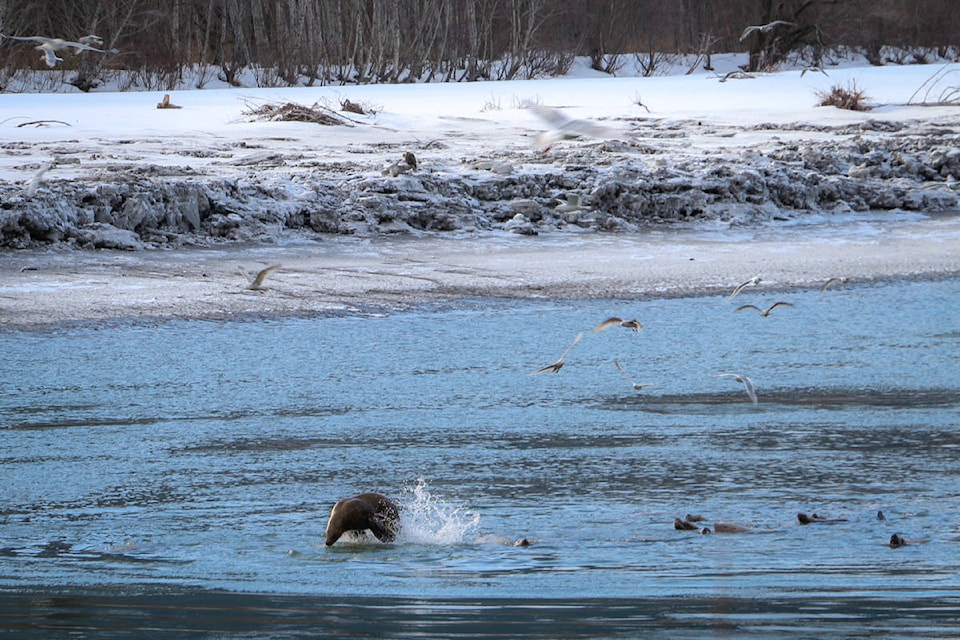The Skeena River may be teeming with eulachon this spring, but this year’s late run of cold weather presented a few obstacles for First Nation fishers trying to catch them.
Ice buildup on the river can make it difficult for fishers to either launch their boats, and once they’re in the water the conditions make it hazardous for their boats and fishing equipment.
READ MORE: DFO contemplating sweeping North Coast salmon fishery closure
Dillon Buerk, the fisheries coordinator with the Metlakatla Stewardship Society, cited Margonish Creek, Telegraph Creek and the Khyex River as places where it has been difficult to fish early in this year’s run.
“The fishers can’t put their nets out without them being ripped off by the ice chunks,” Buerk said.
Mark Biagi, the fisheries manager for Kitsumkalum First Nation, said ice chunks floating in the water can be dangerous “simply because you can get whacked by ice.”
Some fishers opt not to go out on boats at all, choosing instead to use dip nets from the shoreline.
This method, however, comes with its own risks. In addition to the ice hazards in the water, Biagi said there is the danger of fishers being injured by ice building along the shoreline.
“You’ll see these towers forming on the shores when the tide goes down,” he said. “And when they’re harvesting, there’s a possibility of one of them toppling over and crushing someone.”
The run is an annual migration of thousands of eulachon fish along the Skeena River where they search for a place to spawn. It typically takes place from mid-March to the end of April.
The oily fish has been caught and traded by First Nations communities in the Pacific Northwest for generations. It is also called the candlefish because a wick can be threaded through a dried eulachon and it will burn due to the high oil content of the fish.
Icy conditions make it difficult for fishers to make it to their favourite spots at the optimum time and cast their nets.
READ MORE: Cullen demands better leadership on salmon crisis
“You have a very limited amount of time when you can go out and go fishing,” Biagi said. “After the eulachon finish spawning, the majority of them die, so the runs to the spawning grounds is the one chance to catch the fish.
“If they miss, they may have to wait for a few days for another run.”
Biagi said while the weather does appear to be warming up, it is impossible to tell when the ice will break up and make it easier for fishers to go to their usual spots.
“God knows the way the weather’s been behaving lately,” he said. “We could get another week of cold weather and the water will freeze up again.”
matthew.allen@thenorthernview.com
Like us on Facebook and follow us on Twitter
